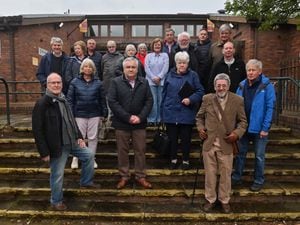Volunteers to help dig up items from the Iron Age
Time Team-style excavations were today starting along a stretch of the Shropshire Union Canal as part of a dig by archaeologists hoping to find evidence and artefacts from the Iron Age.
Experts were alerted to the potential for ancient finds on land at Newton, near Ellesmere, by aerial pictures which showed crop patterns on the field typical of those that have archaeological remains beneath the ground surface.
Volunteers are being encouraged to take part in the dig, which will run for two weeks until June 13.
Tom Hayek, programme manager for the Meres and Mosses Landscape Partnership Scheme, said: "It's really exciting for us. We run projects every year, and this is one of those highlights that we look forward to.
"We've known about the site for some time now and it has been one we've been waiting to get started on for a long while.
"The site itself could hold a lot of things. It's not certain what's beneath the ground but it should show us what the area was used for.
"It could be anything from an agricultural enclosure, to a hill fort, but hopefully it will tell us what human activity was there."
The site, between Ellesmere and Colemere, is surrounded by an area rich in history, and experts believe there is a good chance they will uncover objects from the Iron Age, which dates back to around 1,200 BC.
The age is characterised by certain forms of implements, weapons, pottery and particular systems of decorative design.
Funded by the Heritage Lottery Fund, the dig will run for almost two weeks, through to June 13.
Mr Hayek said: "A site of interest really just sits there until someone has the money to put a spade in it."
Alongside the archaeological dig, students from Manchester Metropolitan University will be taking peat core samples, which will allow them to date plant remains and beetles that lived on the site about 10,000 years ago.
Mr Hayek said: "It's incredible what the peat samples can show. The acidity preserves pollen and other things so well. I once saw a nettle that was thousands and thousands of years old.
"It doesn't look like much, but it's a great insight into what was growing in the past."
He added: "Archaeologically, the most exciting thing we could dig up is something to tell us what was going on all those years ago."
"We might find tools, evidence of industry, evidence of domestic living; it would all tell us what happened on that site.
"At the end of it, through the peat samples and archaeological discoveries, we will be able to visualise what is now a field with a bit of pasture, was like up to 10 thousand years ago."
Anyone who wishes to join the team needs to be 18 or over, physically fit, and able to commit to at least two days of work.
Schools and community groups will also be treated to a demonstration day on June 11, when experts will give some basic training in archaeology.
Mr Hayek added: "There's no guarantee of finding a priceless hoard or anything like that, but the results will be exciting, and tell us a bit about the human activity in the area of that time."





